Experience serenity at the Japanese Peace Pagoda on Rumassala Hill, where culture, history, and stunning views unite beautifully.
Are you curious about the Japanese Peace Pagoda in Sri Lanka? In this guide, we’ll take you on a journey through its rich history, architectural beauty, how to reach it, and the peaceful experience that awaits every visitor. Whether you’re a traveller or just learning, this guide aims to make your visit memorable and easy!
Introduction:
What is the Japanese Peace Pagoda in Sri Lanka?
Perched on lush Rumassala Hill, the Japanese Peace Pagoda offers calm, reflection, and breathtaking Indian Ocean views. Whether you’re an avid traveler or simply love tranquil spots, this serene retreat is a must-visit in Sri Lanka.
Discover what makes the Japanese Peace Pagoda unique, how to reach it, and what awaits you during your visit.
The Story Behind the Pagoda
Built-in 2005, the Japanese Peace Pagoda is a collaborative creation between Japanese monks of the Nipponzan Myohoji Order and local Sri Lankans. This pagoda was designed as a symbol of peace and unity, blending Buddhist principles with a universal message of harmony across cultures.
The pagoda’s location on Rumassala Hill, also known as Buona Vista Hill, carries its own mystical significance. According to the Ramayana, the legendary Hanuman brought a piece of this hill to Sri Lanka during his search for medicinal herbs. This mythical story adds an enchanting layer to the pagoda’s serene and spiritual vibe.
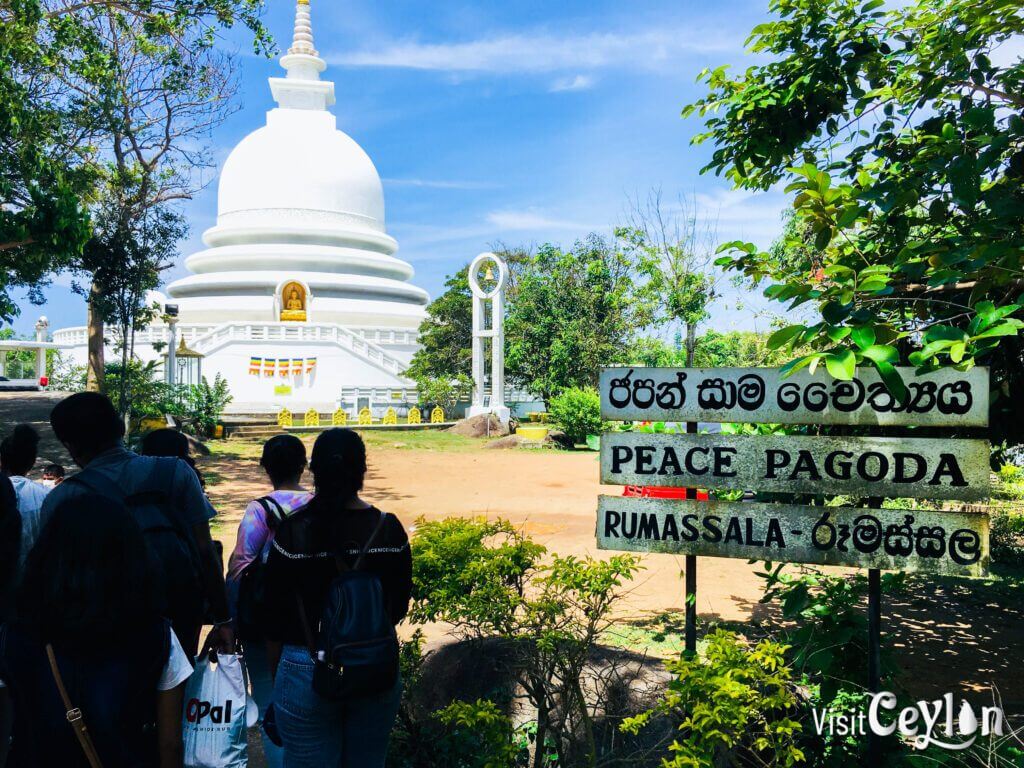
A Marvel of Design
The Japanese Peace Pagoda’s architecture combines simplicity with deep symbolism. The white dome structure, or ‘stupa,’ is built in the classic Japanese pagoda style, reflecting harmony and purity. As you approach, you’ll notice the stupa’s smooth, rounded shape, symbolizing the cycle of life and enlightenment.
Stepping inside, the pagoda becomes even more enchanting. Golden statues, intricate decorations, and beautifully designed interiors create an environment of calm and peace. Four Buddha statues face different directions, symbolizing the spread of peace to every corner of the world. This detail, along with the golden hues and careful decorations, represents the dedication of those who contributed to its creation.
Every detail, from the stupa’s layout to its symmetrical design, is crafted for a calming experience. Visitors often feel deep peace while walking around the base or sitting quietly in its serene surroundings. The simple architecture and gentle color palette invite you to pause, reflect, and embrace the spirit of peace.
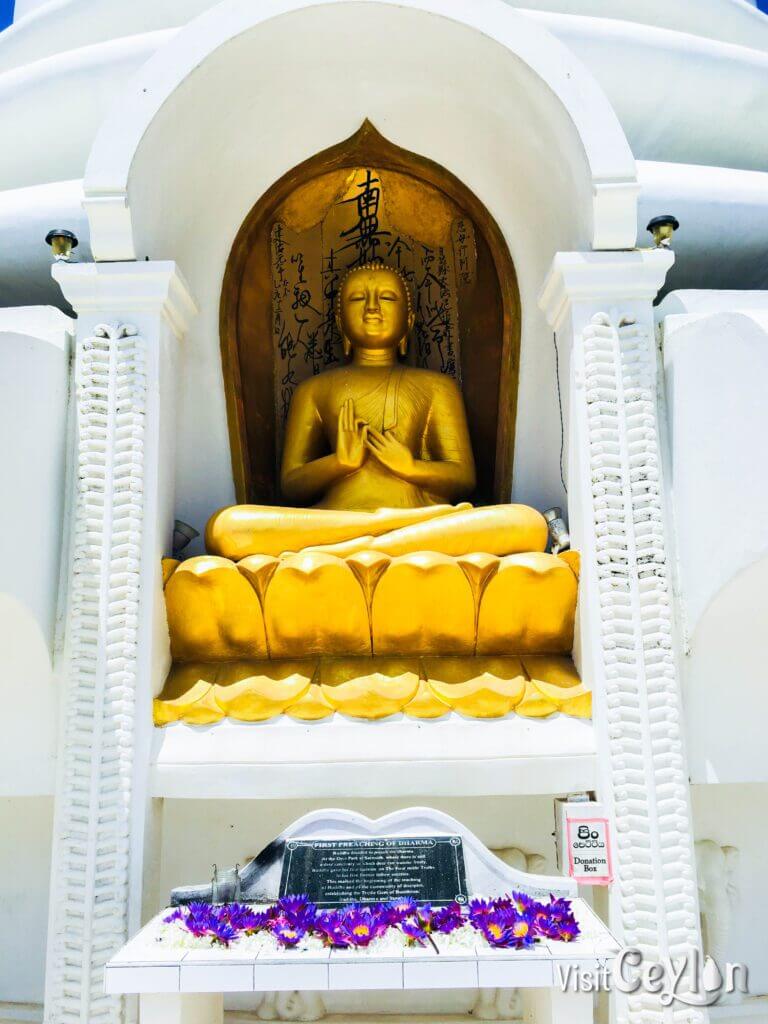
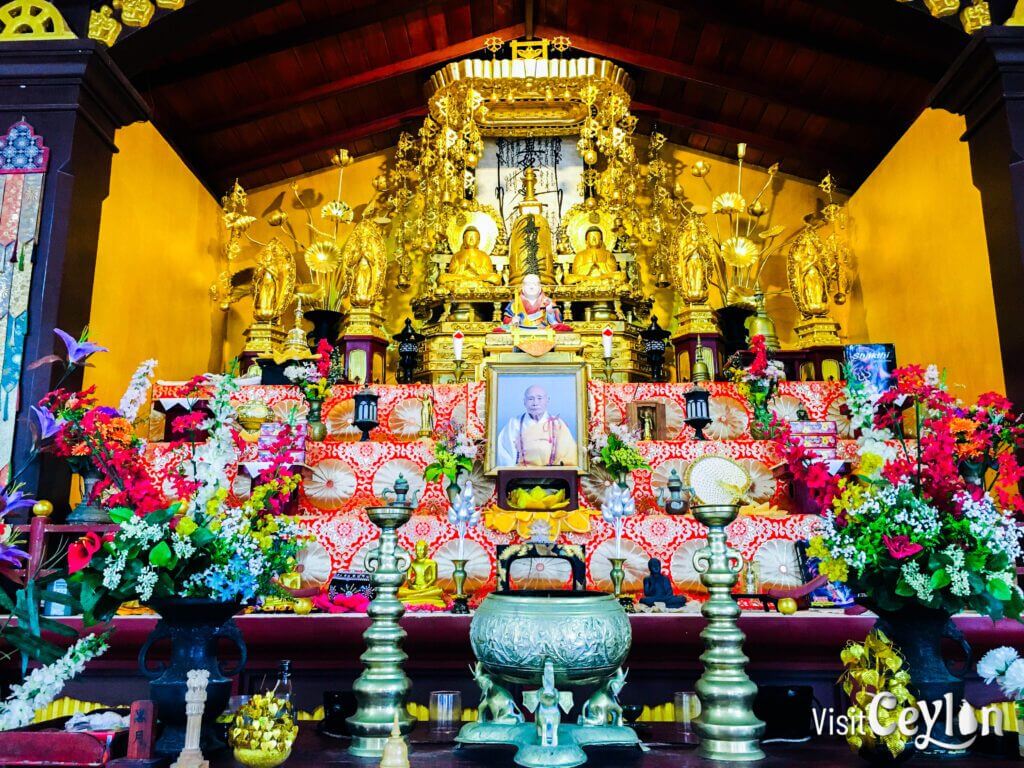
Nature and Tranquility
Beside the charming pagoda lies a serene Japanese Buddhist temple and a lovely garden perfect for relaxation and reflection. It’s an ideal spot to meditate, breathe deeply, or simply enjoy nature’s beauty. The gentle rustling leaves and sweet bird calls create a tranquil atmosphere, helping you escape daily life’s hustle and bustle.
The pagoda’s elevated position provides stunning views of the surrounding landscape. To one side, you’ll see the Indian Ocean, with waves crashing gently on the shore below, and to the other, the dense greenery of Rumassala’s jungle. This unique combination of sea and forest creates a peaceful ambience, allowing you to relax under the cool shade of the pagoda while enjoying the refreshing sea breeze.
Even during the warmer hours of the day, visitors find comfort in the pagoda’s shaded areas, making it an ideal location to pause, meditate, or simply soak in the scenic surroundings. It’s no surprise that this lovely spot is treasured as a peaceful getaway where the beauty of nature and a sense of calm harmoniously unite.

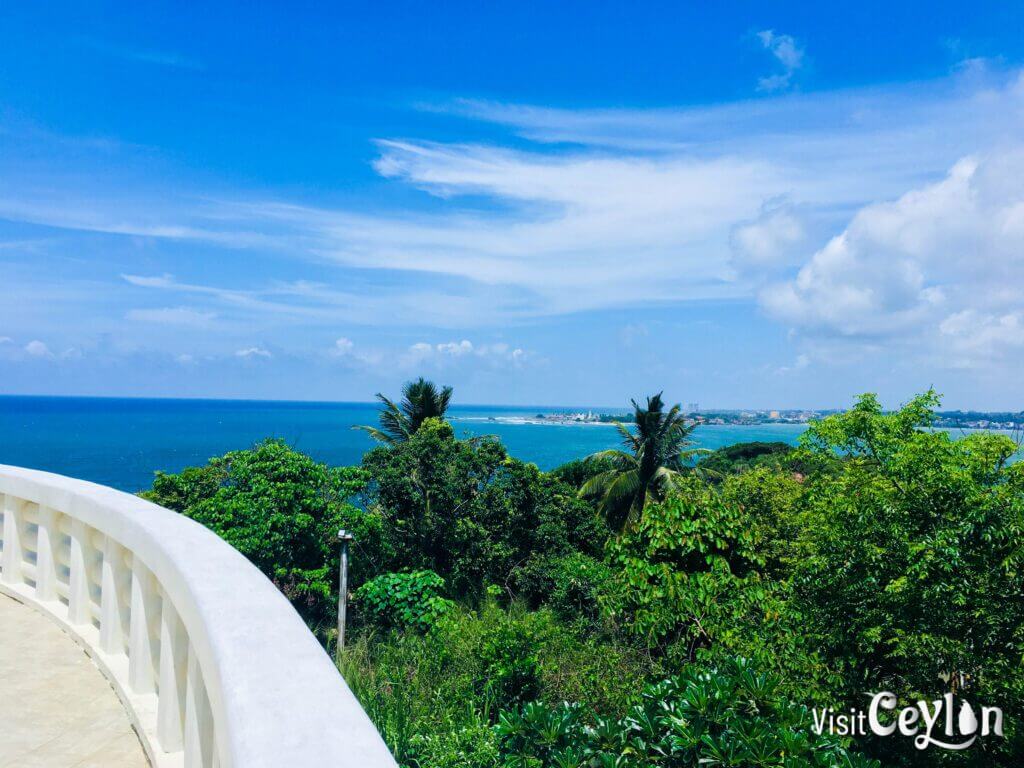
Why It’s Special?
The Japanese Peace Pagoda is more than just a beautiful structure. It’s a place that represents unity, global peace, and cultural harmony. The pagoda’s construction was led by Japanese monks who wanted to share the message of peace with Sri Lanka and the world. Their dedication, along with the contributions of local Sri Lankans, resulted in this serene monument that stands as a bridge between cultures.
The bright white exterior, with a golden Buddha statue at its centre, embodies both purity and the spiritual devotion that went into its creation. This site encourages a sense of unity, reminding us that peace is a shared value that transcends borders, religions, and cultures.
How to Get to the Japanese Peace Pagoda?
To reach the Rumassala Japanese Peace Pagoda, you have a few options:
- From Galle Fort: Starting at Galle Fort, head east towards Rumassala. You can take a tuk-tuk or a local bus, or even enjoy a leisurely walk if you’re up for it. The pagoda is about 4 km from Galle Fort.
- From Unawatuna Beach: If you’re coming from Unawatuna, you can trek through the lush forest of Rumassala. The pagoda is located approximately 1.5 km from Unawatuna Beach.
- By Tuk-Tuk or Taxi: You can easily hire a tuk-tuk or taxi from either Galle or Unawatuna. Just tell the driver you want to go to the “Japan Temple,” and they will know how to take you there, as it’s a well-known spot.
- By Local Transport: Take a local bus and get off at the Bonavista stop; it’s a 2 km scenic walk from there.
- By Hiking: For a more adventurous route, hike from Jungle Beach or Unawatuna along well-marked forest trails.
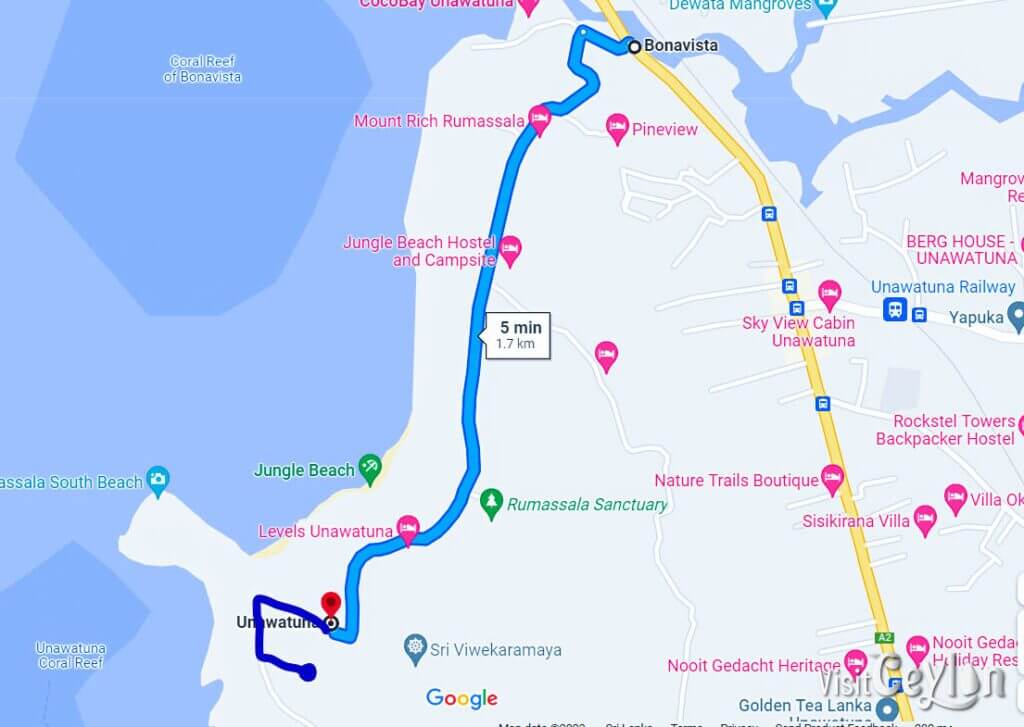
Travel Tip: Wear comfortable shoes, bring water, and enjoy the journey—it’s as beautiful as the destination.
A Must-Visit Destination
If you’re looking for a peaceful place to reflect and find calm, the Japanese Peace Pagoda in Galle is a must-visit. This beautiful site blends Japanese and Buddhist influences and stands as a symbol of unity and peace. Come and enjoy the quiet atmosphere of this special place, and join others in the journey toward peace.
Plan Your Adventure: Explore Our Interactive Map!
To make your journey even easier, check out our interactive map, where we’ve marked all these amazing destinations. Use it to plan your trip and discover more hidden gems in Sri Lanka!
To plan your trip with public transportation in Sri Lanka, visit Sri Lanka Railways for train schedules.

